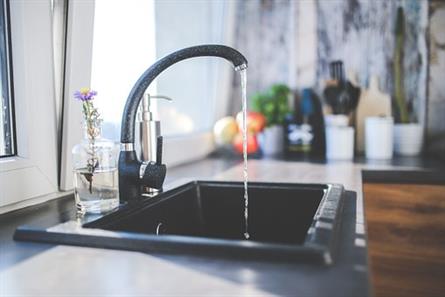Many of our customers call us to help mitigate the water damage from a leak in the kitchen. Kitchen water damage is often slow and happens over a long period of time. This is because the water leak tends to be out of sight, hidden behind large appliances. The leading cause of non-weather-related water damage is appliance plumbing failure according to Chubb Insurance. Hoses for dishwashers and refrigerator ice makers are usually made from thin plastic and easily broken. Routine maintenance is important but made more difficult due to the location. Water can travel through walls and floors down to areas below, adding to the damage. These challenges of detecting kitchen water damage do not mean hope is lost. Add these suggestions to your regular maintenance routine to help keep your kitchen free from water damage.
"About one in 50 insured homes has a property damage claim caused by water damage or freezing each year"
-Insurance Information Institute
Kitchen Water Damage Prevention Areas
Refrigerator
- For refrigerators with ice makers and water dispensers, you'll want to regularly inspect the hoses. Check the water supply line for cracks and kinks. If the water is dispensing slowly or the ice maker is not producing, check the hose for a pin-hole-sized leak and replace it as needed.
- Don't leave the freezer door open often. This raises the humidity level in the freezer and causes frost to develop.
- Check the freezer for frost build-up. If there is excess ice, store perishables elsewhere while you leave the unit unplugged until the blockage defrosts.
- Check the seal on the doors to make sure they are not dry or cracked. Replace as needed. Also, check to see if the fridge and freezer doors close on their own. If they need a push, the seal is weak and will allow warm air in.
- Don't overstuff the freezer or block the vents. This prevents airflow and makes the freezer work overtime and could burn out the unit.
Dishwasher
- Check to make sure the gasket is making a tight seal by looking for cracking or dried-on food.
- Check the drain hose and tighten or replace it if you find any cracks.
- Make sure you use the correct dishwashing detergent for the dishwasher, not dish soap.
- Periodically inspect the drain tub to make sure there is not built-up debris in the drain basket.
- Always make sure the garbage disposal is empty before running a load of dishes to wash.
Plumbing
- Inspect the plumbing under your kitchen sink. Most homeowners use the cabinet space under their kitchen sink to store cleaning supplies. Periodically remove all the clutter in this storage space and look for signs of active leaks or water damage.
- Cooking grease can clog your pipes. Dispose of grease by pouring it into a bowl until it hardens. You can then toss it in the trash- never down the drain.
- Chemical clog removal products can corrode your pipes over time. It's best to use natural clog removal methods such as baking soda or vinegar. Avoid food and debris clogs and always use the sink strainer basket.
- Always run cold water in a garbage disposal before adding food. Avoid tossing stringy foods that are difficult to break down like celery and corn on the cob.
- Winterize your plumbing to prevent a frozen pipe break.
Regular inspections can help you catch a leaking water problem before it gets out of hand. But if you do spot water damage, we can help. At ServiceMaster Dynamic Cleaning we know how to restore water damage and will work with your insurance company to get you back to normal quickly. Call 800-865-5157, we are available every day of the year, day or night, to help our customers through the worst.


